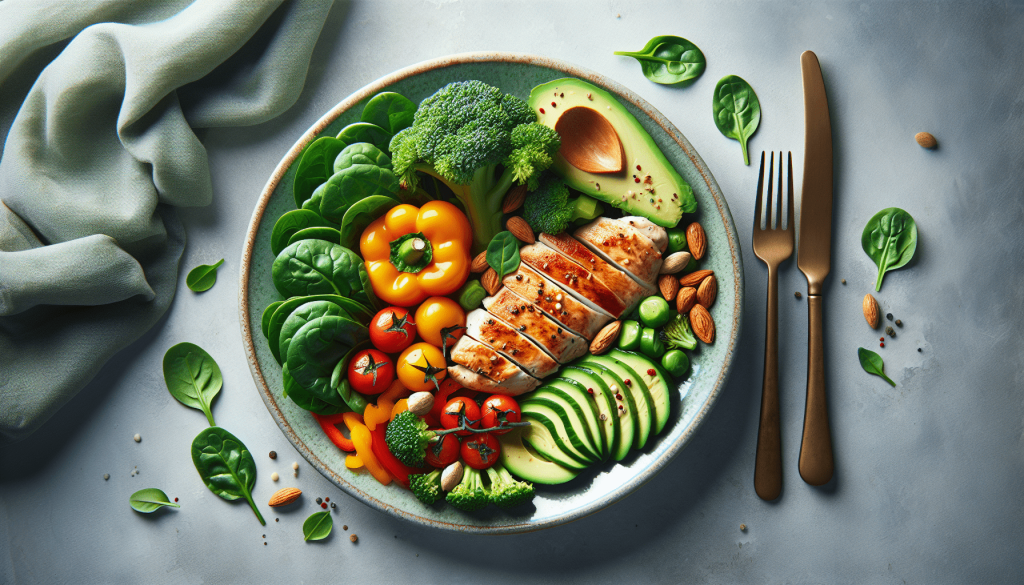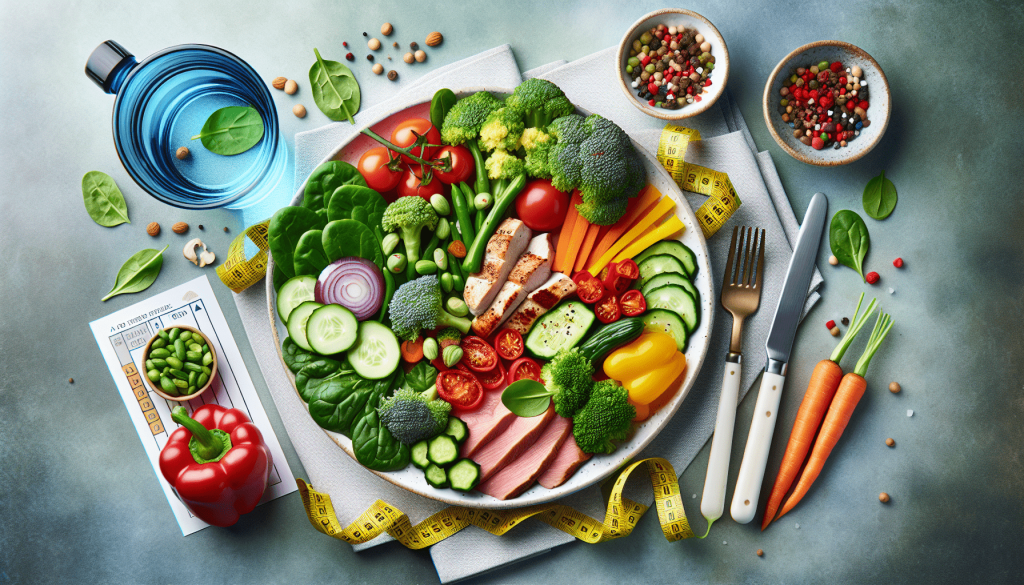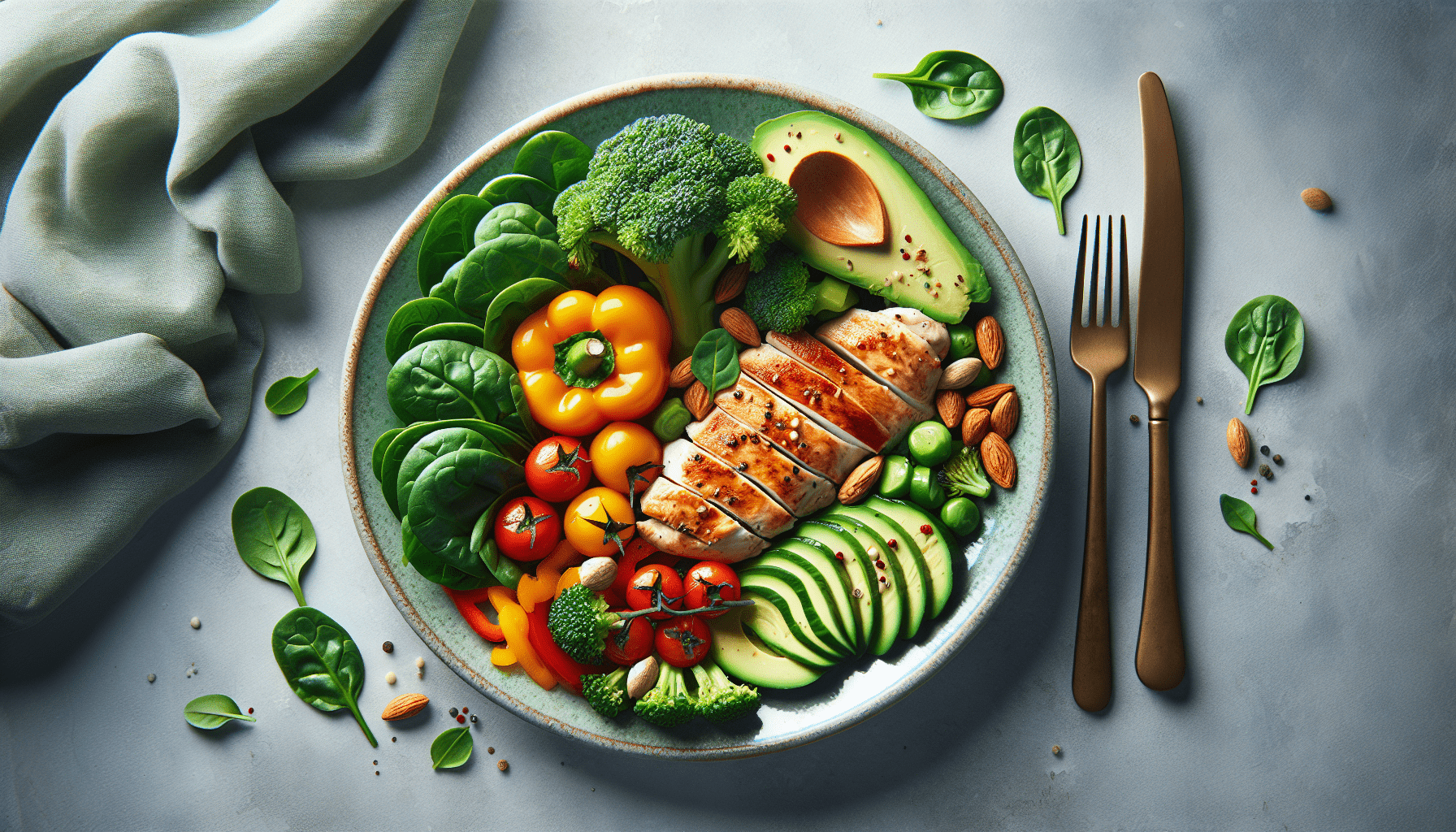Are you ready to embark on a life-changing journey towards a smoother, healthier you? Transitioning to a smooth keto lifestyle has never been easier with these essential tips and tricks. Discover how to seamlessly incorporate keto-friendly foods into your daily routine, navigate potential challenges, and unlock the abundant benefits of this low-carb, high-fat way of eating. Get ready to ignite your metabolism, boost your energy levels, and watch your body transform as you embark on this exciting new adventure. Let’s dive in!

Understanding the Keto Lifestyle
What is the keto diet?
The keto diet, short for ketogenic diet, is a low-carb, high-fat diet that has been gaining popularity in recent years. The primary aim of the keto diet is to shift your body into a state of ketosis, where it starts using fat as its primary source of fuel instead of carbohydrates. This metabolic state can help you burn fat more efficiently and potentially lead to weight loss.
How does the keto diet work?
The keto diet works by drastically reducing your carbohydrate intake and increasing your consumption of healthy fats. When you restrict your carb intake, your body depletes its glycogen stores, which are the stored form of carbohydrates. As a result, your body starts to produce ketones from the breakdown of fats in the liver. These ketones then serve as an alternative fuel source for your body, including your brain.
Benefits of the keto lifestyle
The keto lifestyle offers several benefits beyond weight loss. Many followers of the keto diet report increased energy levels, improved mental clarity, and reduced cravings for sugary and high-carb foods. Additionally, the keto diet may have potential therapeutic benefits for certain medical conditions, including epilepsy, type 2 diabetes, and metabolic syndrome.
Preparing Yourself Mentally
Setting goals and expectations
Before embarking on the keto lifestyle, it’s important to set realistic goals and expectations for yourself. Determine why you want to adopt this lifestyle and what outcomes you hope to achieve. Whether your goal is to lose weight, improve your health, or simply increase your energy levels, knowing your reasons and setting specific targets can help you stay motivated throughout your journey.
Understanding the challenges
Transitioning to a keto lifestyle may come with its fair share of challenges. Initially, you may experience what is commonly referred to as the “keto flu,” which includes symptoms such as headaches, fatigue, and irritability. It’s important to understand that these side effects are temporary and part of the adjustment process as your body adapts to its new fuel source. By acknowledging these potential challenges, you can better prepare yourself mentally and emotionally to overcome them.
Finding motivation and support
As with any lifestyle change, finding motivation and support is crucial to your success. Surround yourself with individuals who are also following the keto lifestyle or who can provide encouragement and understanding. Joining online communities or seeking out local support groups can be a great way to connect with like-minded individuals who can offer guidance, share recipes, and provide support when you need it.
Clearing Out Your Pantry
Identifying high-carb foods to eliminate
To truly embrace the keto lifestyle, it’s important to rid your pantry of high-carb foods that can sabotage your progress. Start by identifying foods that are high in carbohydrates, such as bread, pasta, rice, potatoes, and sugary snacks. Remove these from your pantry and donate them to a local food bank if possible. By eliminating these tempting foods from your immediate environment, you’ll make it easier to stick to your new way of eating.
Stocking up on keto-friendly ingredients
Once you’ve cleared out the high-carb foods, it’s time to restock your pantry with ingredients that are keto-friendly. Some essential items to have on hand include healthy fats like avocados, coconut oil, and olive oil, as well as low-carb vegetables like spinach, kale, and cauliflower. You’ll also want to have a variety of protein sources such as chicken, beef, and eggs. Lastly, don’t forget to stock up on keto-approved snacks like nuts, seeds, and cheese.
Organizing your new pantry
With your keto-friendly ingredients in place, take the time to organize your pantry in a way that makes it easy to find what you need. Consider using clear containers or labeled jars to store nuts, seeds, and other small items. Group similar items together, such as oils and spices, to make meal prep more efficient. By creating an organized and visually appealing pantry, you’ll be motivated to stay on track with your new keto lifestyle.
Building a Sustainable Meal Plan
Determining your daily calorie and macro goals
To create a sustainable and effective meal plan, it’s important to determine your daily calorie and macronutrient goals. Start by calculating your basal metabolic rate (BMR), which is the number of calories your body needs to function at rest. From there, you can adjust your calorie intake based on your weight loss or maintenance goals. Additionally, you’ll want to determine your ideal macronutrient ratios: high fat, moderate protein, and low carbohydrates.
Choosing a variety of keto-friendly foods
Eating a variety of foods is essential to ensure you receive all the necessary nutrients while following the keto lifestyle. Aim to include a wide range of low-carb vegetables, proteins, and healthy fats in your meal plan. Some examples include leafy greens like spinach and kale, fatty fish like salmon and mackerel, and avocado and nuts as sources of healthy fats. Experiment with different recipes and flavors to keep your meals exciting and enjoyable.
Creating a shopping list and meal schedule
Once you have determined your meal plan, it’s time to create a shopping list based on your keto-friendly ingredients. Be sure to plan for breakfast, lunch, dinner, and snacks, and consider any specific dietary restrictions or preferences you may have. Having a detailed shopping list will prevent you from straying off track and ensure you have all the necessary ingredients on hand. Additionally, develop a meal schedule that works for your lifestyle and allows for consistency in your eating habits.

Making Gradual Dietary Changes
Reducing carbohydrate intake gradually
Instead of drastically eliminating carbohydrates from your diet all at once, consider reducing your intake gradually. Slowly decrease your portion sizes of carb-rich foods and replace them with low-carb alternatives. For example, instead of having a full plate of pasta, try incorporating more vegetables and reducing the amount of pasta on your plate. By making gradual changes, you give yourself time to adjust and minimize the likelihood of feeling deprived.
Replacing unhealthy fats with healthy ones
While the keto diet encourages high-fat consumption, it’s important to focus on consuming healthy fats rather than unhealthy ones. Replace unhealthy fats, such as trans fats found in processed foods, with healthier options like avocados, nuts, and olive oil. These fats provide essential nutrients and are beneficial for your overall health. Remember, the quality of the fats you consume matters just as much as the quantity.
Incorporating more protein-rich foods
Protein is an essential macronutrient when following the keto lifestyle. It helps keep you feeling full and satisfied and supports muscle growth and repair. Incorporate protein-rich foods into your meals, such as chicken, fish, tofu, and eggs. Explore different cooking methods and seasonings to add variety and flavor to your protein sources. Don’t forget to balance your protein intake with the right amounts of fats and carbohydrates to maintain ketosis.
Dealing with Potential Side Effects
Understanding the keto flu
The keto flu refers to a collection of symptoms that some individuals may experience when transitioning to the keto lifestyle. These symptoms can include fatigue, headache, irritability, and brain fog. They typically occur as a result of your body adapting to using fat as its primary fuel source. Fortunately, the keto flu is temporary and can be mitigated by staying hydrated, getting enough sleep, and gradually reducing your carbohydrate intake. Remember, the symptoms will subside as your body becomes accustomed to ketosis.
Drinking plenty of water and staying hydrated
Staying hydrated is crucial when following the keto lifestyle. As your body adjusts to ketosis, it naturally releases water and electrolytes, which can result in dehydration. Aim to drink at least eight glasses of water per day, and consider adding electrolytes to your water to maintain a proper balance. Proper hydration will not only support overall health but can also help alleviate the symptoms associated with the keto flu.
Managing electrolyte imbalance
During the initial stages of the keto lifestyle, you may experience an electrolyte imbalance due to the changes in your diet. To prevent this, focus on increasing your intake of electrolyte-rich foods, such as leafy greens, avocados, and nuts. Additionally, consider supplementing with electrolyte tablets or powders to ensure you’re meeting your body’s needs. Proper electrolyte balance supports muscle function, nerve transmission, and overall cellular health.
Exploring Delicious Keto Recipes
Trying out easy keto breakfast recipes
Breakfast is a great opportunity to kick-start your day with a delicious and keto-friendly meal. Explore recipes such as scrambled eggs with vegetables, omelets filled with cheese and bacon, or keto pancakes made with almond flour. Incorporating healthy fats like avocado and using low-carb vegetables like spinach or mushrooms can add both flavor and nutritional value to your morning meals.
Experimenting with keto lunch and dinner options
Lunch and dinner offer endless possibilities for delicious and satisfying keto meals. Consider recipes like grilled chicken with roasted vegetables, cauliflower fried rice, or zucchini noodles with meatballs. Remember to incorporate a variety of proteins, healthy fats, and low-carb vegetables to ensure a balanced meal. Get creative with seasonings and spices to add depth of flavor without adding unnecessary carbs.
Indulging in keto-friendly desserts and snacks
Contrary to popular belief, the keto lifestyle doesn’t mean you have to give up desserts and snacks entirely. There are plenty of keto-friendly options that can satisfy your sweet tooth or curb your savory cravings. Experiment with recipes like chocolate mousse made with avocado and cocoa powder, keto fat bombs made with coconut oil and nuts, or cheese crisps for a crispy and savory snack. These treats can be enjoyed in moderation while still staying on track with your keto goals.
Staying Consistent and Overcoming Challenges
Planning ahead for social gatherings and dining out
Social gatherings and dining out can present challenges when following the keto lifestyle, but with proper planning, you can stay consistent. Before attending an event, communicate your dietary needs with the host or research keto-friendly options at the restaurant. If necessary, offer to bring a dish that aligns with your dietary requirements. By planning ahead, you can enjoy social occasions without compromising your progress.
Finding keto-friendly alternatives
One of the keys to staying consistent with the keto lifestyle is finding keto-friendly alternatives to your favorite high-carb foods. With a bit of creativity, you can still enjoy pizza, burgers, and even pasta with some simple substitutions. Explore recipes for cauliflower crust pizza, lettuce-wrapped burgers, or zucchini noodles. By finding alternatives that satisfy your cravings, you’ll be less likely to feel deprived and more likely to stick to your keto lifestyle.
Dealing with cravings and temptations
Cravings and temptations are a natural part of any lifestyle change, including the transition to a keto lifestyle. When cravings strike, find keto-friendly alternatives or distractions to help combat the temptation. Keeping keto-friendly snacks on hand, finding satisfying replacements for your favorite indulgences, or engaging in an enjoyable activity can help redirect your focus and overcome cravings. Remember, it’s normal to have moments of weakness, but the key is to stay motivated and committed to your goals.
Incorporating Exercise into Your Routine
Understanding the role of exercise in ketosis
Exercise is an important component of a healthy lifestyle, and it can also support your journey into ketosis. Physical activity can help deplete your glycogen stores more quickly, allowing your body to transition into ketosis more efficiently. Additionally, exercise can enhance your weight loss efforts, boost your mood, and improve overall well-being. Aim to incorporate a combination of cardiovascular exercise, strength training, and flexibility exercises to maximize the benefits.
Choosing suitable exercises for your fitness level
When incorporating exercise into your routine, it’s important to choose activities that align with your fitness level and preferences. Whether you enjoy walking, jogging, cycling, or dancing, find activities that you enjoy and that can be sustained long-term. Consider consulting with a fitness professional to ensure you’re engaging in exercises that are suitable for your body and fitness goals. Remember, consistency is key, so find activities that you look forward to and can commit to regularly.
Establishing a consistent workout schedule
To make exercise a habit, it’s important to establish a consistent workout schedule that works for your lifestyle. Determine the best time of day for you to exercise, whether it’s before work, during lunch breaks, or in the evening. Choose a specific number of workout days per week, and block off those times in your calendar as non-negotiable appointments with yourself. By prioritizing exercise and making it a regular part of your routine, you’ll increase your chances of long-term success.
Tracking Progress and Celebrating Success
Using apps or journals to track food intake and progress
Tracking your food intake and progress can be key to understanding your body’s response to the keto lifestyle. Consider using apps or journals to record your meals, snacks, and macronutrient ratios. This can help you identify any patterns or areas for improvement, as well as help you stay accountable to your goals. Additionally, track your progress by measuring your weight loss, body measurements, and energy levels. Seeing the positive changes over time can be incredibly motivating.
Measuring weight loss, body measurements, and energy levels
While weight loss is often a primary goal of the keto lifestyle, it’s important to track other measures of progress as well. Take regular measurements of your body, including waist circumference, hips, and thighs. Sometimes, changes in body composition may not be reflected on the scale but can be seen through inches lost or changes in clothing sizes. Also, pay attention to your energy levels and overall well-being as you transition to the keto lifestyle. Increased energy, improved mental clarity, and a general sense of well-being are all indicators of success.
Recognizing and rewarding achievements
As you progress on your keto journey, it’s important to recognize and celebrate your achievements along the way. Set milestone goals for yourself and reward yourself when you reach them. This could be something as simple as treating yourself to a new book, taking a spa day, or going out for a special meal. Celebrating your achievements, no matter how big or small, reinforces your progress and keeps you motivated to continue with your keto lifestyle.
